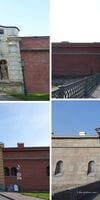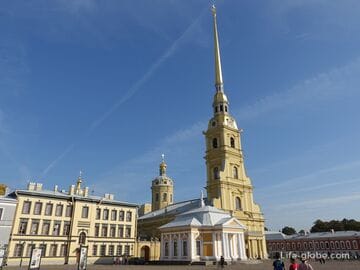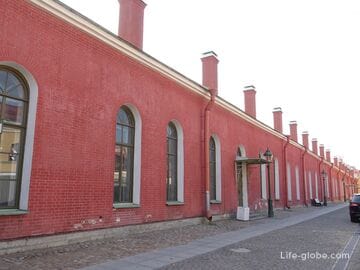The Peter and Paul Fortress is one of the most interesting and oldest architectural monuments in St. Petersburg.
The Peter and Paul Fortress is located in the center of St. Petersburg on Zayachy Island.
The fortress was conceived by Peter I and the date of its foundation is 16 (27 in the new style) May 1703, which is also considered the day of the foundation of St. Petersburg. In the entire history of the fortress was not used in any battle. From the first quarter of the 18th century until the beginning of the 1920s, the fortress served mainly as a prison, and since 1924 it has been a state museum and on its territory there are now museums and architectural monuments, in a separate category of which the gates of the Peter and Paul Fortress can be distinguished.
In total, there are 6 gates in the Peter and Paul Fortress, 5 of which lead directly to the fortress, and the sixth-the Ioannovsky Gate, located in the auxiliary structure of the fortress - the Ioannovsky Ravelin, and through which most guests begin their route through the fortress.
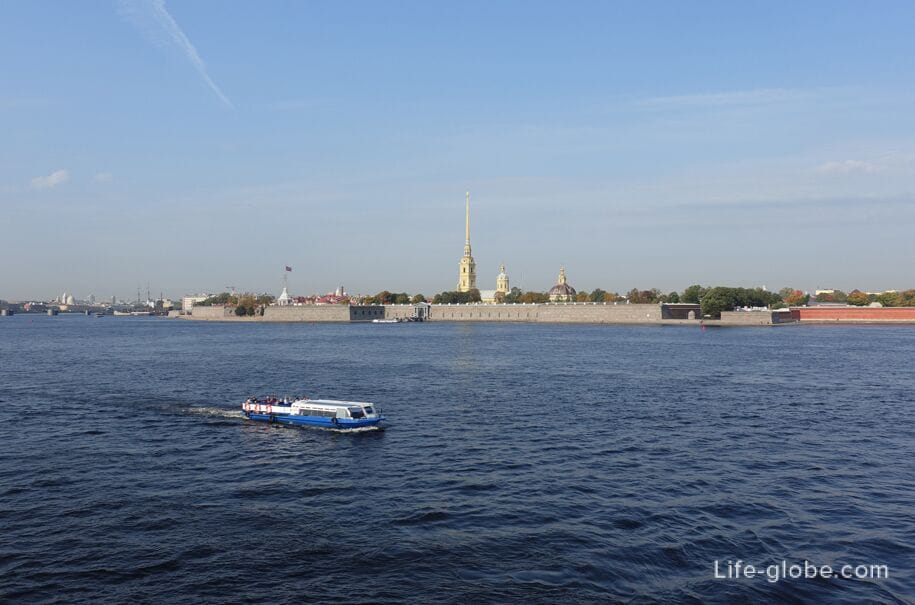
St. John's Gate
St. John's Gate is located in the eponymous St. John's Ravelin and lead to the ravelin with St. John's Bridge.
The Ioannovsky Gate was built in 1738-1740, when the ravelin was built of stone during the reign of Empress Anna Ioannovna, in honor of whose father - Tsar Ivan V, the gate and the ravelin got their name - "Ioannovsky".
The author of the project of the gate was a military engineer Christopher Antonovich Minich, the construction work was directly supervised by Christian de Marin.
During the history of the gate was restored.
The eastern facade of the gate has a grand appearance with preserved features inherent in antiquity and ancient Russian architecture, characteristic of the construction of arches and triumphal gates.
Above the arched opening of the gate there is an inscription "1740" - the date indicates the time of completion of all work on the construction of the stone Peter and Paul Fortress.
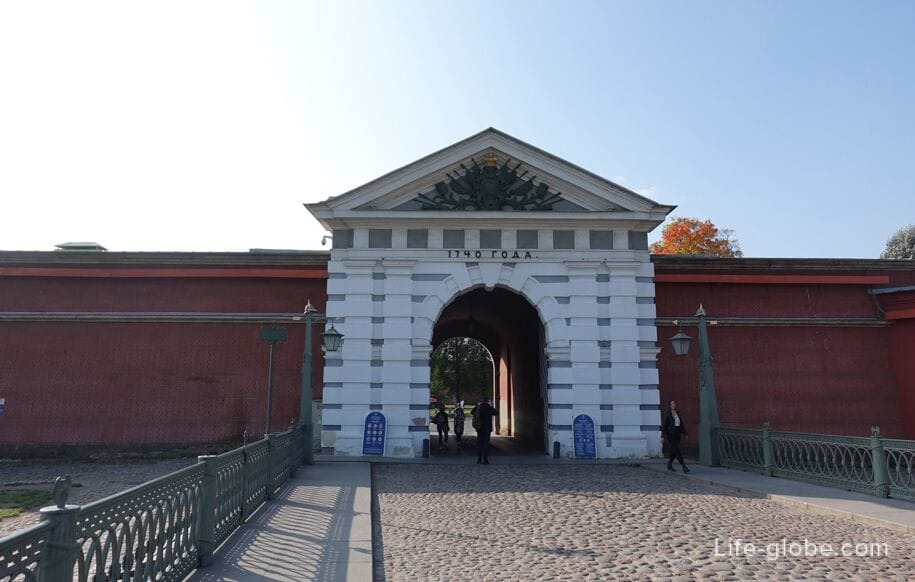
West facade (internal) The St. John's Gate, in comparison with the eastern one, looks very simple and unremarkable. Learn more about St. John's Gate…
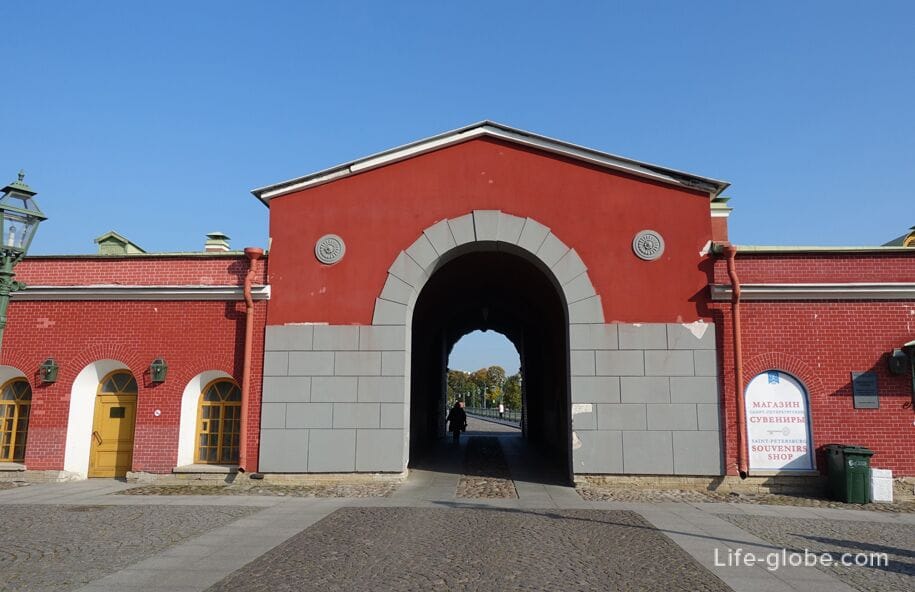
Peter's Gate
Peter's Gate is the triumphal and most beautiful gate of the Peter and Paul Fortress.
The gate is located in the village of the same name Peter's Curtain (part of the fortress wall) and lead directly to the fortress behind the Ioannovsky Ravelin.
Peter's Gate was built in 1703 in honor of the liberation of Russian lands from the Swedes in the Northern War. These gates have long served as the only entrance to the fortress.
The architect and fortification engineer Domenico Trezzini designed the gate. Originally, the gate was built in the Baroque style, had a stone base and a wooden upper part.
In 1916-1917, the upper wooden tier of the gate was rebuilt in stone.
The name "Peter's Gate" was given in honor of the Apostle Peter, whose two-meter statue crowned the pediment of the gate. The statue is now lost. Also, the name of the gate "Petrovsky" is associated with Peter I.
During the history of the gate was subjected to restorations. Learn more about Petrovsky Gate…
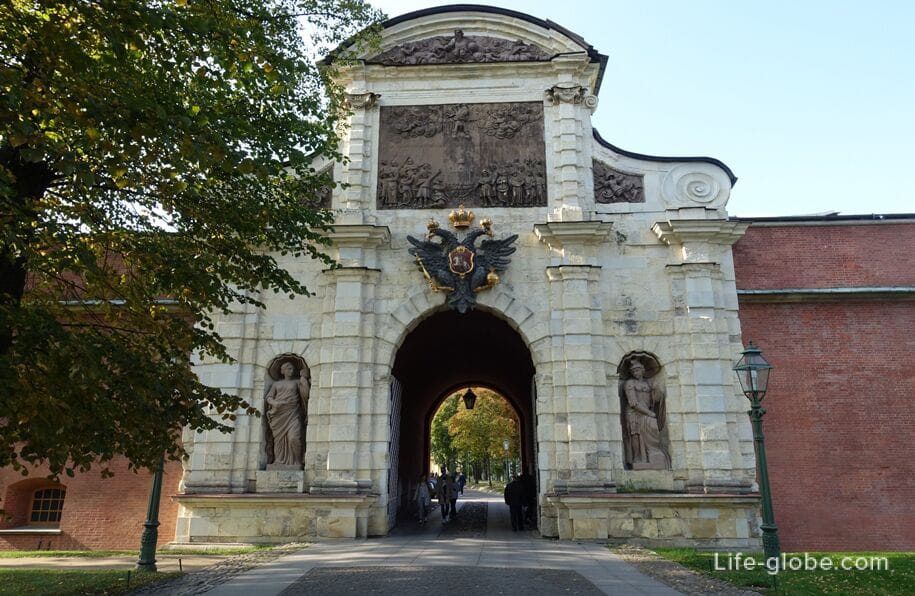
Nevsky Gate
The Nevsky Gate is located on the southern side of the fortress in The Neva curtain.
The name "Nevsky" gate was given due to the fact that they lead out of the fortress to the waters of the Neva River.
Initially, the Nevsky Gate was made of wood and was built in 1714-1716.
In the 20s of the 18th century, the Nevsky Gate was replaced by a stone one. The author of the project was the architect and fortification engineer Domenico Trezzini.
During the history of the Nevsky Gate was rebuilt and reconstructed several times.
The Neva Gate leads from the Peter and Paul Fortress directly to the waters of the Neva-a granite three-arch pier with steps, to which tourist boats dock.
Once upon a time, prisoners of the prison were brought to this pier, through the Nevsky Gate, at night, from where they were sent to hard labor or execution by water. For this reason, this gate was popularly called the "Gate of Death". Learn more about the Nevsky Gate…

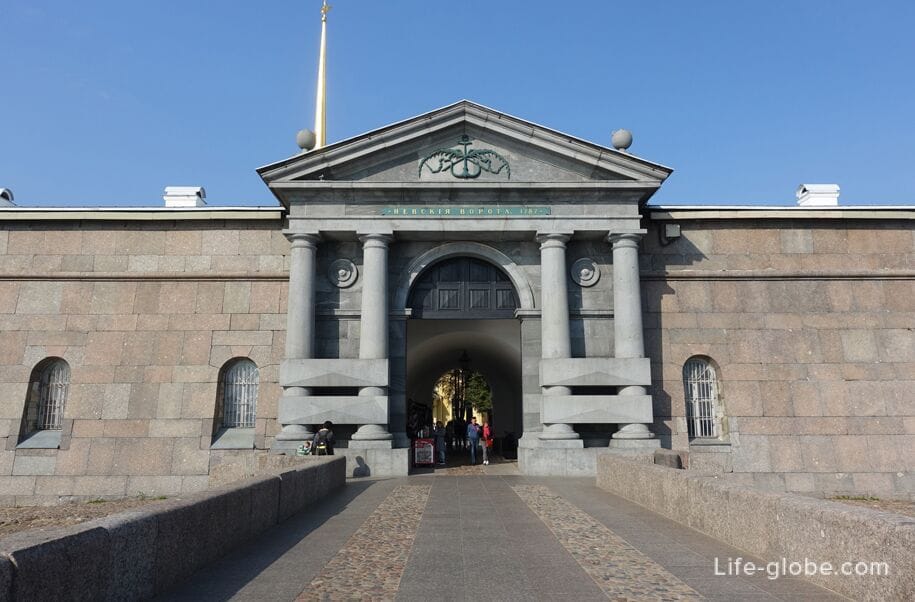
Vasilievsky Gate
Vasilyevsky Gate is located on the western side of the Peter and Paul Fortress in Vasilyevsky curtain and leads from the fortress to Alekseyevsky ravelin.
The name "Vasilyevsky" comes from the fact that the curtain wall and the gate face the Vasilyevsky Island of St. Petersburg.
The gate was built in stone in 1710 on the site of the passage in Vasilyevskaya Kurtina.
In 1792-1794, according to the project of the military engineer F.O. De Rancourt, the outer facade of the gate was decorated with double pilasters and a triangular pediment. In 1874, the gate passage was enlarged, and the portico was dismantled and restored in 1953 by the architect A.A. Kedrinsky. Learn more about Vasilievsky Gate and curtin…
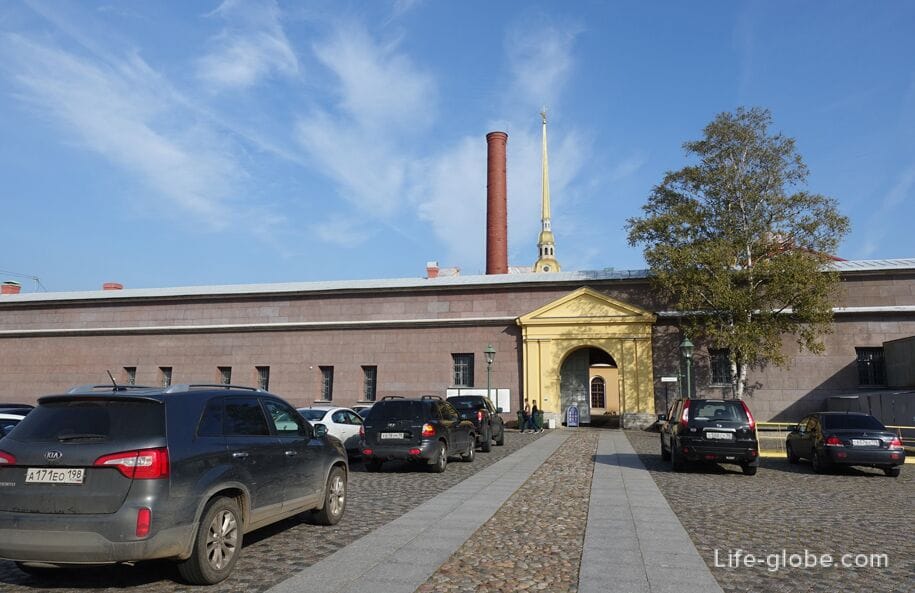
Nikolsky Gate
The Nikolsky Gate is located in the north-western side of the Peter and Paul Fortress in the Nikolskaya Kurtina.
The name "Nikolskiye" comes from the Church of St. Nicholas "na Mokrushakh" (Uspenskaya), which was located at the beginning of the 18th century on the St. Petersburg side.
The Nikolsky Gate was built in 1729 during the reconstruction of the wooden-earth Nikolskaya Curtain wall into a stone one.
In 1792-1793, according to the project of the military engineer F. O. de Rancourt, the facades of the gate were decorated with four-column porticos.
In 1874, according to the project of the military engineer A. A. Carbonnier, the gate passage was expanded, and the facades were rebuilt in Neo-Renaissance forms. Learn more about Nikolsky Vorota and kurtin…
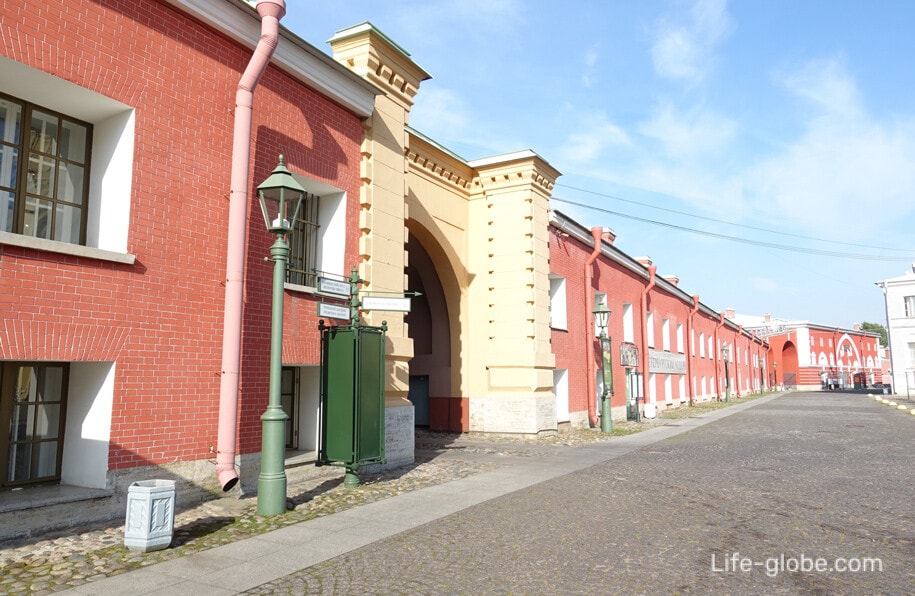
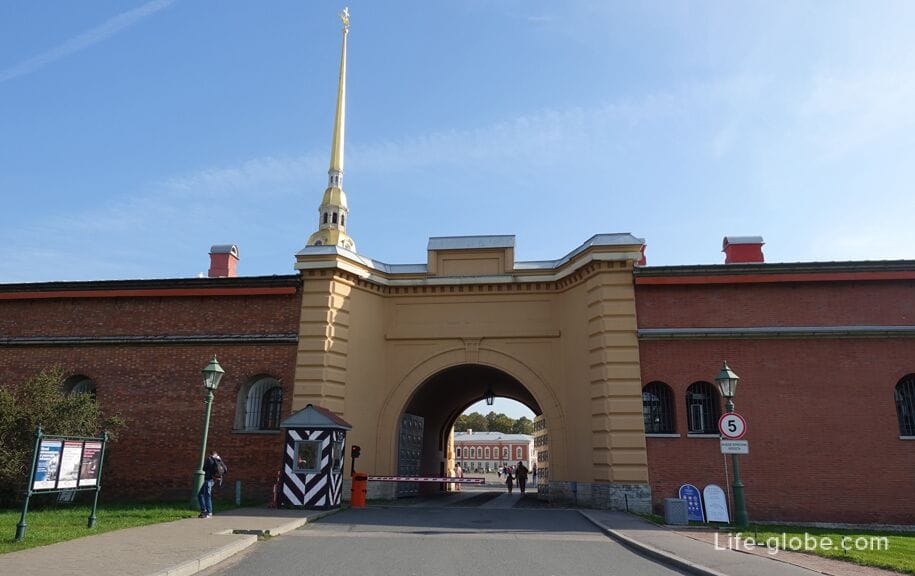
Kronverk Gate
The Kronverk Gate is located in the north-eastern side of the Peter and Paul Fortress in the Kronverk Curtain.
The gate was built in stone in 1709.
In 1829, the arch of the outer facade of the gate was designed in the form of a portal, framed by limestone slabs with a keystone. The gate passage was enlarged in 1872.
Near the gate in the 30s of the 19th century, a wooden bridge was built, connecting the fortress with the Kronverk embankment across the bayou.
These gates are the most inconspicuous of all the gates of the Peter and Paul Fortress - they are extremely simple and, as a rule, closed to the passage.
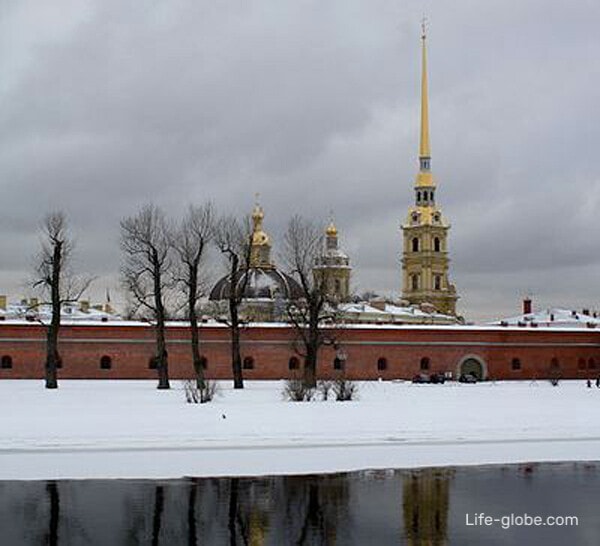
Practical information
The entrance to the territory of the Peter and Paul Fortress is free (free of charge).
You can also visit the Peter and Paul Fortress with one of the excursions
Nearest metro stations: "Gorkovskaya" and "Sportivnaya".
All accommodation facilities in St. Petersburg, including in the city center and near the Peter and Paul Fortress, can be viewed and booked here




